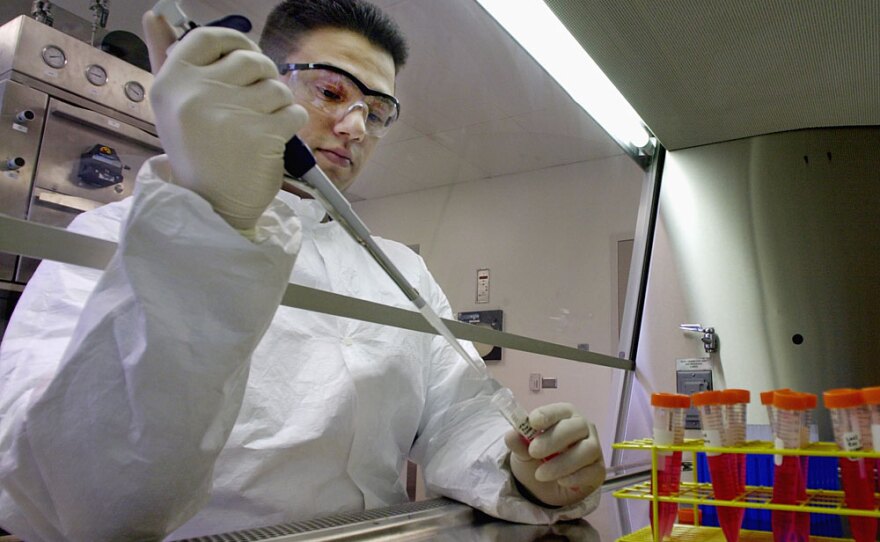Twenty-five years ago, it seemed as if gene therapy was on the verge of revolutionizing medicine. But that revolution never occurred, and scientists realized that they had been overly optimistic about how quickly they could develop such therapies.
Now, however, there are signs that the field of gene therapy is making definite progress, even if the revolution is still on hold.
The concept of gene therapy is simple. Some diseases are caused by damage to a single gene — for example, cystic fibrosis and hemophilia. Give patients the healthy gene, and in theory, the disease is cured.
Dr. Mark Kay, who now runs the gene therapy program at Stanford University, says that in the early days of gene therapy, it turned out to be extremely difficult to get healthy genes into the cells that needed them.
"If we saw one cell out of a million, or even 10 million or 100 million, that were genetically modified with the gene therapeutic, we would be excited," he says.
How Gene Therapy Works
It's no simple job to get genes into individual cells, but there is one organism that is extremely good at it: a virus.
"What a virus does is deliver its own genetic material to a cell," says Ken Cornetta, president of the American Society of Gene and Cell Therapy.
"What we can do in the setting of gene therapy is to re-engineer that virus to allow it to do what it does best, which is deliver genetic material to a cell. But we can also remove the viral genes, and replace them with the genes that we need to deliver to the cell to treat the disease," he says.
But there were problems. When scientists used viruses to insert genes into patients, their immune systems tried to fight off the virus. And then, when the genes did get in, in some cases they switched on other genes that caused cancer, making the cure nearly as bad as the disease.
"The field was in big trouble 10 years ago, says Joseph Glorioso, a researcher and editor of the journal Gene Therapy. "A lot of people were disillusioned — 'Oh this is never going to work, we thought it would be easy,' and all that."
But Glorioso says gene therapists are a stubborn bunch, and despite the setbacks, many researchers kept at it. He says many therapies take a long time to make it from the lab bench to the bedside.
Take bone marrow transplants. They were first attempted in the 1950s, but it wasn't until the 1980s that they began to be used routinely to treat leukemia and other blood disorders.
A Reason To Be Optimistic
The field of gene therapy is now seeing positive results. Scientists have found new ways to modify viruses to make them better at delivering genes, and several studies are showing that the gene therapy can effectively treat an array of disorders.
There's a therapy for a rare immune disorder called ADA deficiency, and more recently scientists at the Children's Hospital of Philadelphia reported dramatic success using gene therapy to treat a rare inherited form of blindness. It was a small study — only 12 subjects.
"All of the subjects showed improvement," says Kathy High, a Howard Hughes Medical Institute investigator and one of the leaders of the study. She says the improvement was greatest for the children in the study.
High says we should expect to hear more success stories in the coming months and years — and not just for rare disorders, but for more common diseases like AIDS and cancer.
"I really do think that the field, you know, after a long labor, is beginning to deliver," says High. "It's a nice time to be working in this field."
Maybe now, scientists' optimism is justified.
Copyright 2023 NPR. To see more, visit https://www.npr.org. 9(MDM3NjYwMjA5MDE1MjA1MzQ1NDk1N2ZmZQ004))



